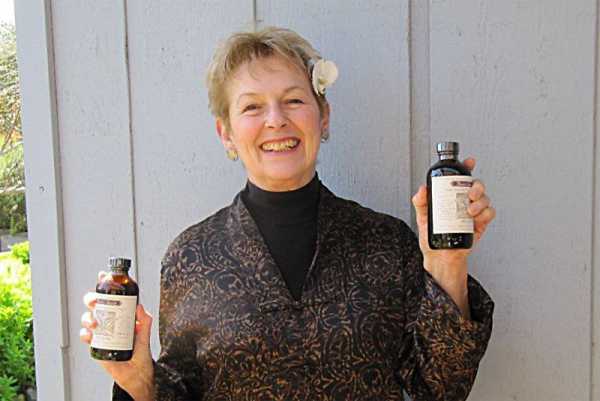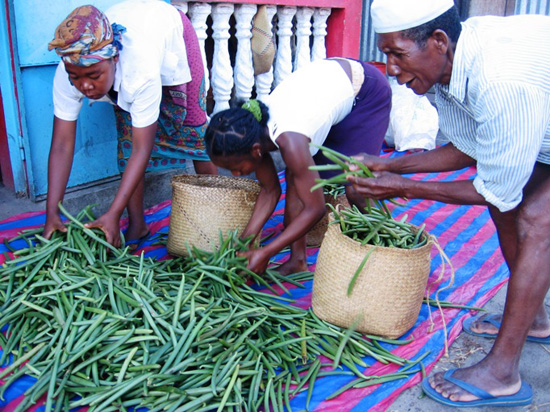
I'm amazed at how superior your vanilla is!
– Des, The Grommet
Having spent her girlhood in long lines at the water pump, Zambian Voices of Our Future Correspondent, Dando Mweetwa, knows first hand what must be done in a country where only 58% of the population has access to drinkable water.
“My thoughts were always of water: I could talk water, smile water, walk water, and dream water.”
In Zambia, many women suffer back aches and chest pains from carrying heavy loads of water.
“During the cold season I would shiver in the long queue to the pump—the cold weather unbearable.”
I can still hear the words my sister spoke to me almost every morning—
“Wake up Dando!” she would yell. “It’s already 4:30! We ought to start off else we spend two hours in the queue at the well.”
In both highly populated and rural areas of Zambia, my country, women and children spend most of their productive hours drawing water from wells and communal taps. This is largely due to the unavailability of clean water in communities like mine. In 2004, only 58% of the Zambian population had access to clean drinking water.
I grew up in a land blessed with the largest water resources in all of southern Africa. Zambia is home to massive lakes and plentiful rivers. And with Victoria Falls—some of the largest waterfalls in the world—one would think that Zambia would have no problem offering adequate and safe water to its community. But access to clean water has been a problem since my country’s independence in 1964.
During my early teens, in the first years of the twenty-first century, I learned what it meant to be denied an essential commodity. I found myself living in a highly populated Zambian community with my sister. My thoughts were always of water: I could talk water, smile water, walk water, and dream water. I could not do a thing without thinking of where and how to find water. I remember walking the streets in search of it when it was too dark to see anything ahead. Women and children ages 8 to 10 would come from all corners of the community to join in the walk. We would walk with fear running through our veins, for we had visions of whom we could meet along the way. Attacks on women and girls who are looking for water in the dark of early morning are common.
During the cold season I would shiver in the long queue to the pump—the cold weather unbearable. I remember I would wear a long blue jersey, a chitenge wrapped around my small waist, and black shoes on my feet. The sight of babies clinging to their mothers with runny noses and tears in their eyes has never left my mind.
When the gate opened to the house where we would draw our water, we would all run in hopes of being first. Occasionally, I would be number ten, but this meant little; one person could need to fill three or four buckets, while others filled large drums. Mothers were eager to be first in line so that they could go home early to prepare breakfast and bathe their husbands and children.
I had trouble getting to school on time because of my duties. But I had no choice. As a girl, I had to make sure that we had enough water to drink, wash, and bathe. Lifting heavy loads took its toll. I would carry containers on my head, as we had no wheelbarrow. I developed chest pains that the doctor said came as a result of lifting these loads. In Zambia, most women complain of backaches and chest pains.
Even in this urban setting, we walked long distances to find water. Most was found in shallow wells that had been dug by concerned residents for a minimal fee. The wells are almost always found two to three meters from a pit-latrine. Many of us were aware of the complications the proximity to theses latrines posed, but we had no choice but to take the risk.
The rainy season was always a joyous time for me: We could collect water in buckets placed under the edge of our roof, which mostly eliminated the need for the long trek to the pumps. This water was used mainly for washing and bathing, though some of our neighbors used it for cooking and drinking.
Many dig wells in their yards, which provide them with access to water and a small source of income, since they sell it to their communities for a small fee. But underground the well water and pit-latrine water mingles, contaminating the drinking supply. Outbreaks of different water-borne diseases such as diarrhea and dysentery are rampant in the compounds. These illnesses sometimes lead to death.
Since November 2008 more than 500 people have lost their lives due to cholera. It seems that every rainy season there is an outbreak of the disease. Cholera and other sanitation-related diseases like trachoma are the second biggest killers in Zambia’s children according to Inter Press Service News Agency.
According to the 2008 Global Corruption Report by Transparency International, 80% of health problems in developing countries can be attributed to inadequate water and sanitation, a problem that claims the lives of nearly 1.8 million children every year and leads to the loss of an estimated 443-million school days for children who are suffering from water-borne diseases.
Chlorine is sold relatively inexpensively, but the majority of Zambians live on less than half-a-dollar a day, and most would rather buy a pamela (a small plastic bag of millie meal) to feed their children than buy chlorine to purify their water. And, in rural areas, access to chlorine comes with challenges of transport and poverty.
Every year, money is allocated to the water sector but little or nothing has been implemented in poor communities to change this reality. According to Zambia’s Anti-Corruption Commission, the government workers installs the majority of boreholes on government officials’ private land, rather than making water available to the rural poor. This has lead to a number of groups creating innovative plans to address the issue. One group came up with an initiative to erect a communal tap after their community councilor refused to do so. They wrote a proposal to Care International, who funded their project. Today, the communal tap serves hundreds of people but lacks regular maintenance.
The government is the major drive of development in any country. It is only through transparency and accountability that we will see access to adequate clean water become a reality. Local and international leaders have convened to address this important issue, but monitoring and evaluations must be strictly followed to ensure that these plans are implemented. The international community, local communities, and politicians must continue to work with communities to make adequate clean water available. If only politicians would follow through on their promises, then we would see a drastic reduction in water born diseases and reduced deaths and hardship throughout Zambia and other developing nations.
I was given a small bottle of Rain’s Choice in a gift basket and I have been hooked ever since. The flavor makes all of my baking so much better! I will never use grocery store vanilla again!


© 2021. All Rights Reserved
Designed/Developed by Kat & Mouse